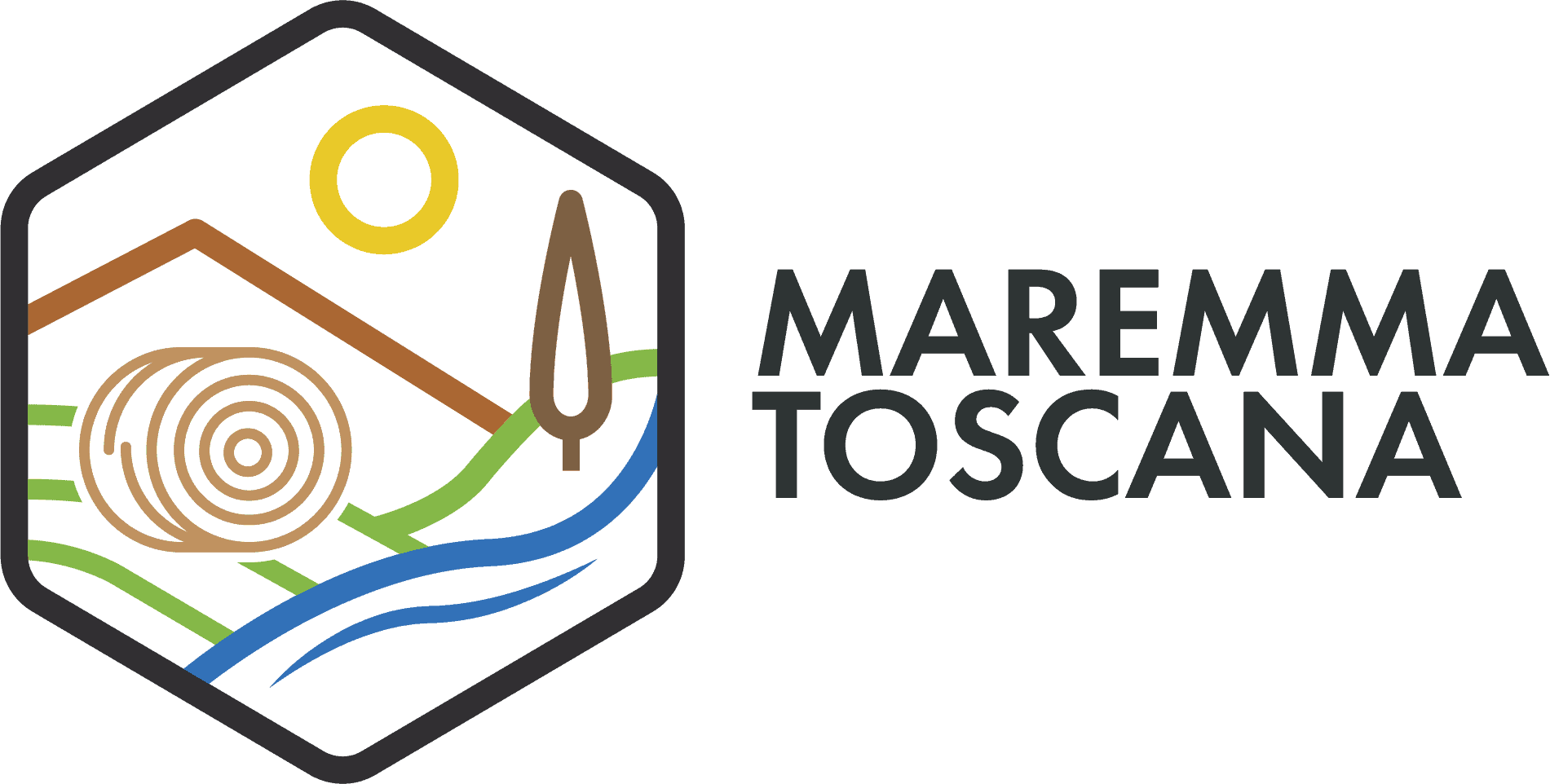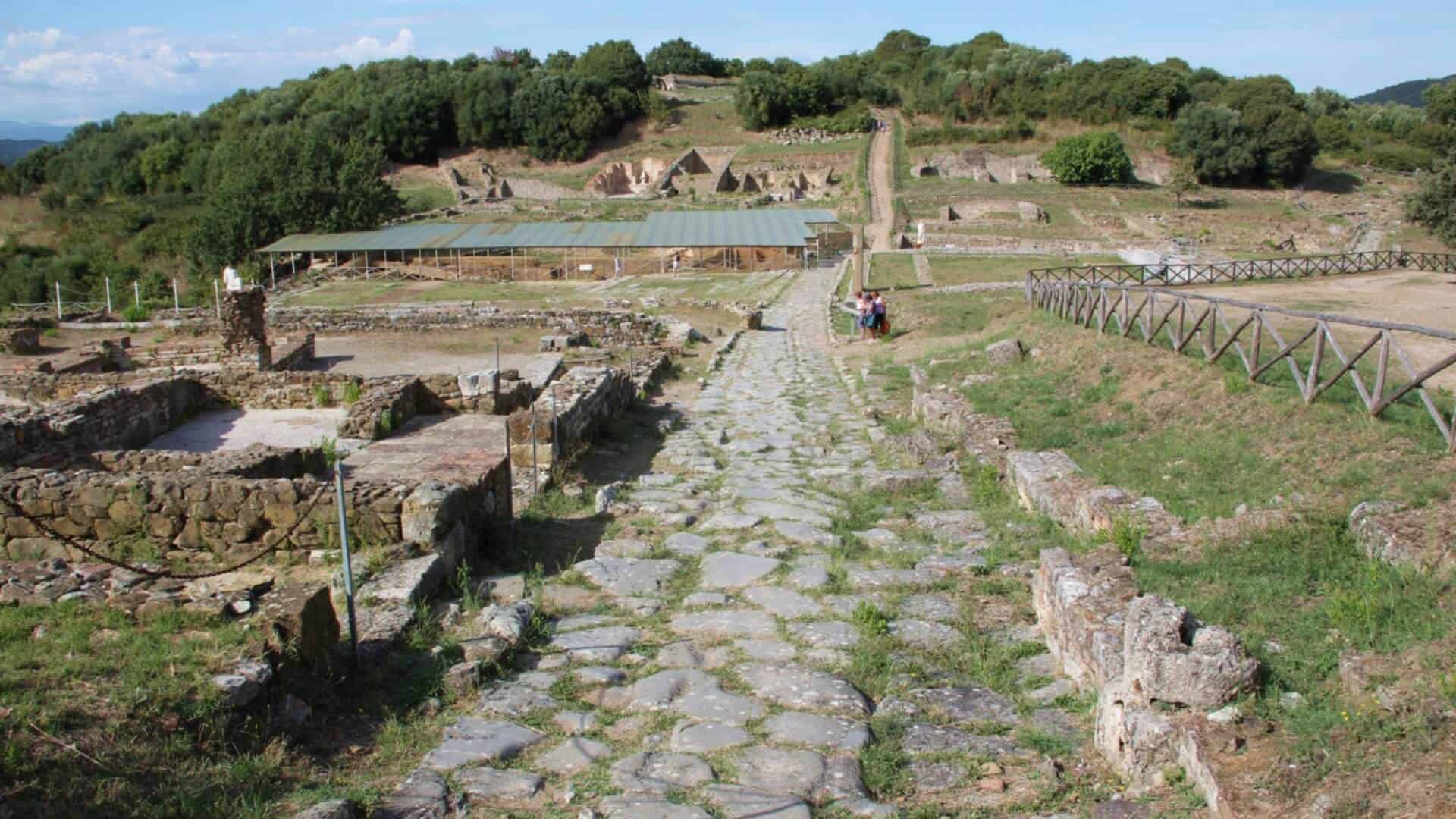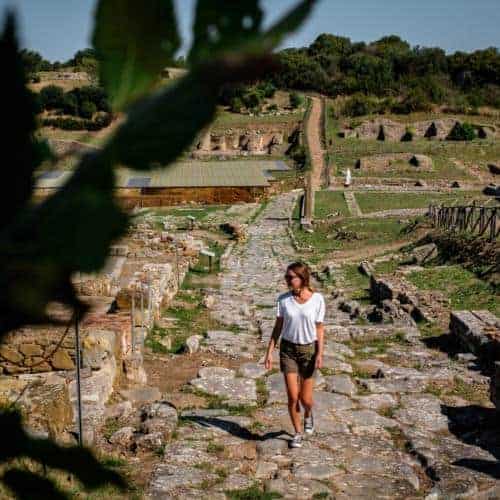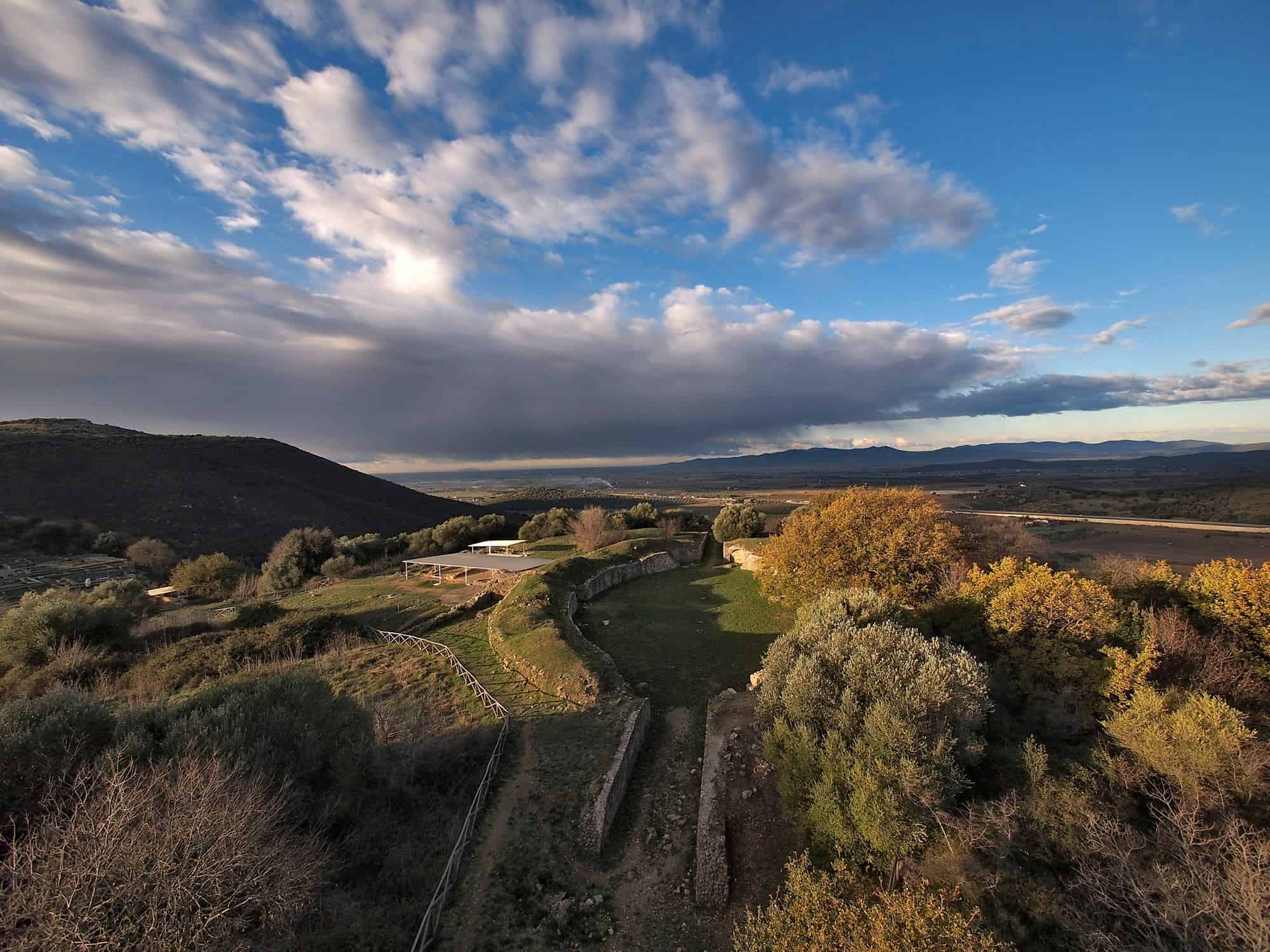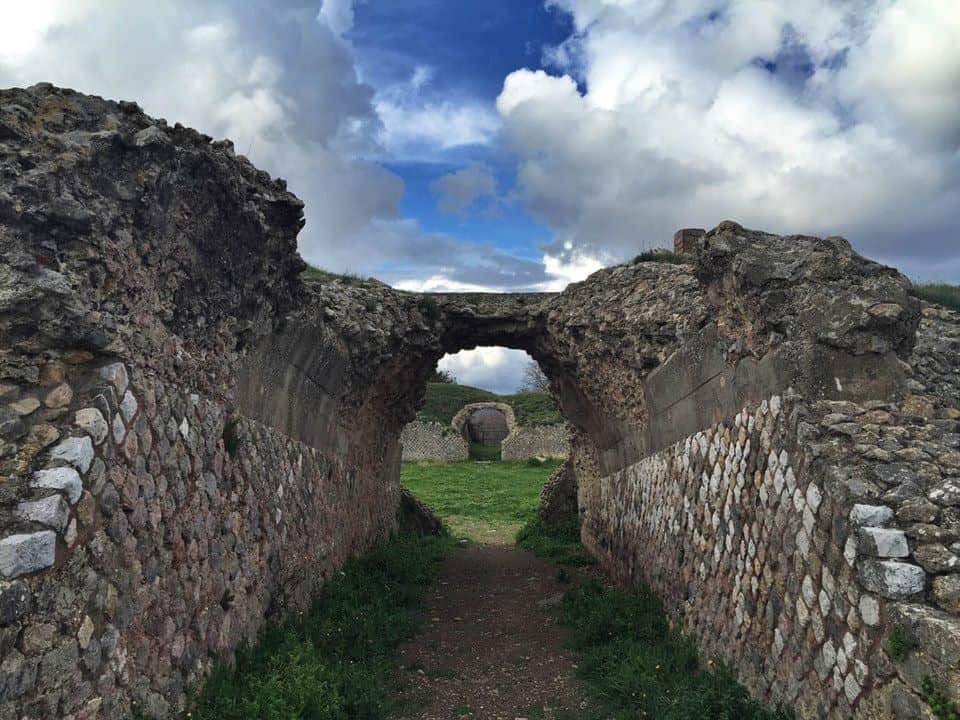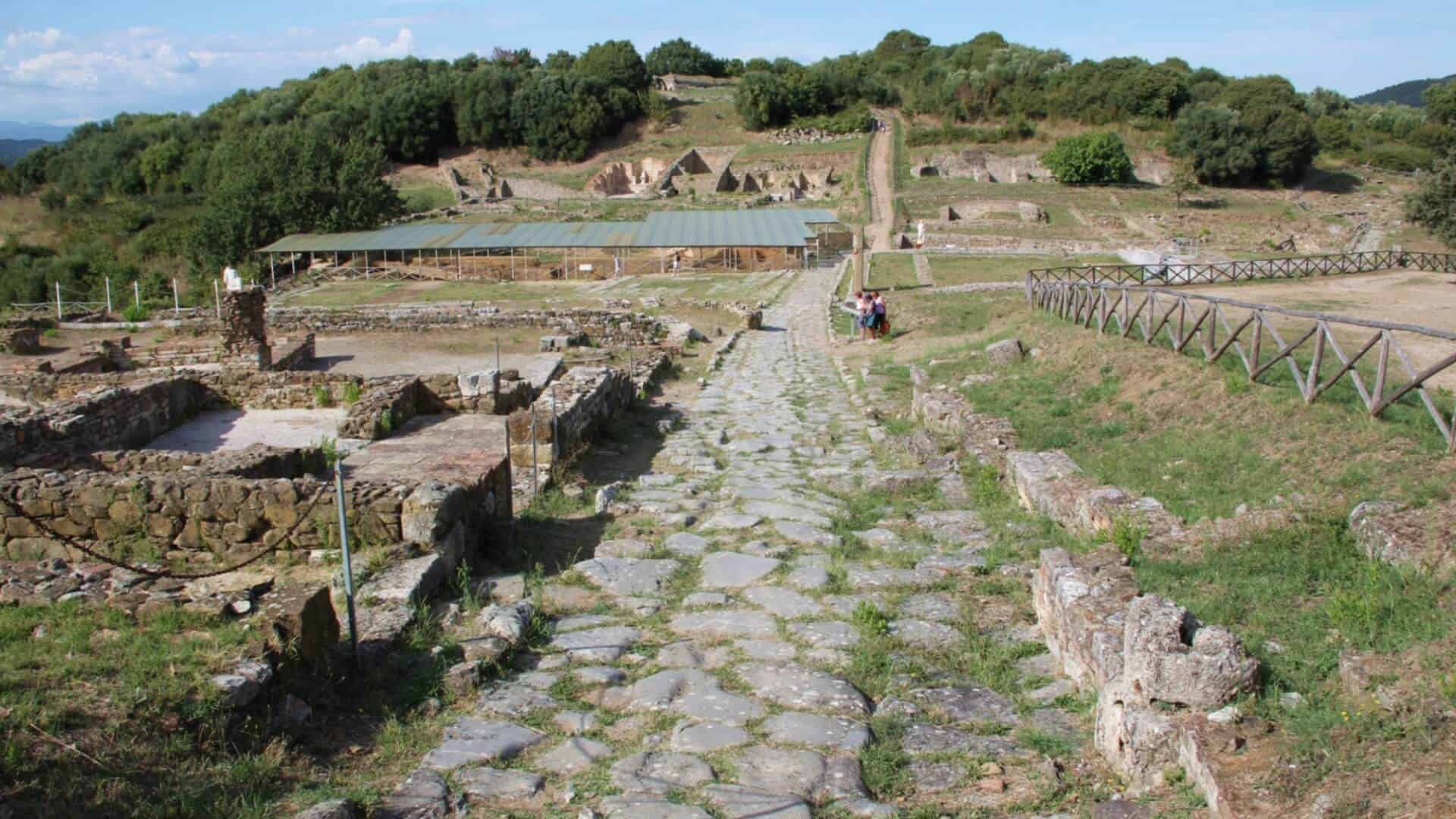Roselle Archaeological Park
Roselle is one of the most important archaeological areas of the Tuscan Maremma, located 10 kilometers north of Grosseto. “Rusellae” was one of the first Etruscan cities in the area (7th century BC) and Romanized in 294 BC.
The site of Roselle, shrouded in a mysterious and profound silence, is witness to a past long hidden in the Maremma scrub, which for centuries has protected and preserved it up to us. Located at the foot of Poggio di Moscona, a few kilometers from the provincial capital Grosseto, it is one of the rare Etruscan settlements in the Tuscan Maremma not occupied by modern houses, which allowed archaeologists the freedom to carry out more in-depth studies and research. The charm of the place is also given by its particular location between the sea and Mount Amiata, surrounded by thick and fragrant Mediterranean scrub. From the excavations, still ongoing and partial, some residential neighborhoods dating back to the 7th-6th century BC have emerged, as well as important and rare evidence of daily life in the Etruscan urban centres, which have made it possible to understand this civilization not only through the objects found in the necropolis. To date, the most important findings in the archaeological area of Roselle are the “cyclopean” walls from the archaic age, the oldest and most complete in Etruria, a Hellenistic neighbourhood, the Forum from the Augustan age, the Domus of the Mosaics, the Amphitheater and the Baths.
Roselle is a fascinating enigma of the contemporary archeology of the Maremma, the attention and caution that guides the excavators in the difficult exploratory work is amply justified.
The city of Roselle, included among the twelve city-states of Etruscan Dodecapoli (Rusel in the Etruscan language), was founded by Etruscans in the 7th century BC on a hill near the sea and on the eastern shore of Lake Prile (Lacus Prilius), which has now disappeared, only a small part remains which corresponds to the Diaccia Botrona Nature Reserve. Due to its central position with respect to Vetulonia, Volterra, Arezzo and Chiusi, Roselle was a crossroads between northern and southern Etruria until the Roman conquest in 294 BC. In one of his writings, Pliny speaks of the Ombrone as a navigable river and this suggests that commercial traffic started from Roselle along the river route. With the Lex Iulia of 90 BC. the inhabitants took on Roman citizenship and in the imperial era there was a resumption of activity, as evidenced by the remaining monumental buildings. From the end of the 6th century Roselle was one of the Byzantine strongholds of Tuscia until the conquest of the Lombards. Subsequently it was the first capital of the county of the powerful (Lombard) Aldobrandeschi family e fino al XVI secolo sporadicamente abitata.
The Archaeological Area of Roselle
Recent archaeological excavations have highlighted the presence, under the pavement of the Roman forum, of two adjacent archaic buildings with an oval plan with public and sacral functions, one consecutive to the other. This is just one of the latest surprises that the archaeological area of Roselle has revealed, given that to date the excavated surface corresponds to only a small part of the ancient city. The entrance to the area is at one of the seven existing gates in the suggestive Cinta Muraria, more than 3 kilometers long (3270 metres) and on average 7 meters high, built in the 6th century BC. by the Etruscans, still intact and fully visitable. Along the main Etruscan route, later maintained by the Romans, is the forum, paved in travertine, with numerous shops; on the east side there is the Civil Basilica. Nearby is the Augusteum, reachable from the southern side of the forum, intended for the cult of the imperial family of Augustus, and the Domus dei Mosaici, a patrician house with splendidly decorated floors. On the northern side of the ancient forum there is the Basilica dei Bassi, while going up the hill you come across the monumental amphitheater reused as a castrum in the early Middle Ages, surrounded by the remains of an Etruscan residential neighbourhood. To the east of the forum there is a large thermal complex with rooms used as a frigidarium, tepidarium and calidarium, transformed into a church in a later age. To the south, among the remains of ancient houses, there is an artisan neighborhood with ceramists’ kilns.
Roselle spa
The Roselle area is famous for its thermal springs, used since ancient times for their very high heat – 38 degrees – and their beneficial characteristics. There is no documentation attesting to the greatness of the Roselle Baths; however, the vast fame of the place and its healing virtues is certain.
Important: The archaeological area of Roselle is a little abandoned to itself (it could be much more valorised given its importance), there are few signs and indications that direct visitors to the various routes and archaeological remains, it is therefore advisable to have a guide before you go, so you know how best to move; in summer it is necessary to bring water to drink.
Resources about Roselle
- Pro Loco of Roselle – The association has been operational since 2007 with headquarters in the historic Terme di Roselle “Leopoldine”.
- Grosseto – Archaeological Area of Roselle – Address, opening hours, prices, description of the archaeological area and photographs.
